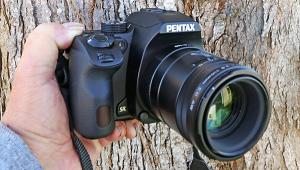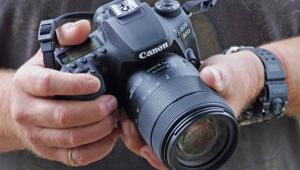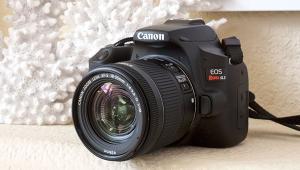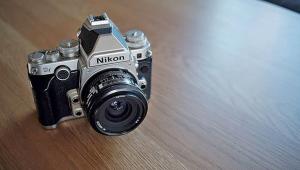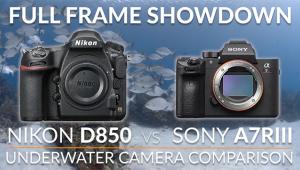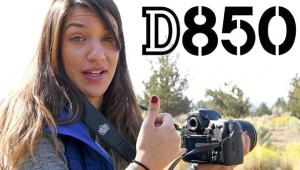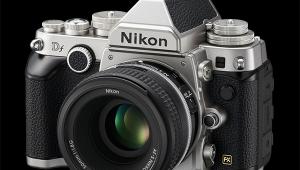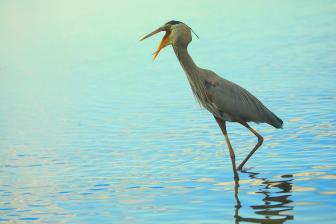Nikon’s D700 D-SLR; The Full-Frame March Continues
The Nikon D700 is the latest in what is clearly a continuing trend in so-called “full-frame” D-SLRs. Unless a radical departure from the classic 35mm form factor takes place, this class of camera cannot accommodate a larger sensor, at least in terms of area. The D700 does offer an (effective) 12.1-megapixel resolution, modest in terms of some of the competition, but also priced to reflect it, at $2999, body only.
 |
For comparison, Nikon’s D300, a DX format (APS-C), delivers 12.3 megapixels while their D3 full frame offers 12.1. On the Canon side, the venerable 5D (full frame) offers 12.8 megapixels, while the Rebel XSi offers 12.2. Nikon says the D3 sells for about $5000, though street prices are less, and perhaps will become a bit more so when the D700 is fully in the pipeline.
There are numerous benefits offered by the camera, and some drawbacks, but first a bit of a digression into some digital history and past image quality. Recently I have been reviewing lots of images made over the past 10 years using digital devices, and the one thing I can assure you is that image quality has improved substantially, thanks in large part to more sophisticated image processors. Yes, resolution has increased, and that’s certainly a help, but early to mid-stage digital images show, on close inspection, a disturbing amount of noise. While this varies a bit camera to camera, with no brand sinless, one of the chief culprits seems to be lack of efficiency of the pixels in terms of light gathering, something that becomes painfully clear at any ISO above the “native” sensitivity. Of course, this is a relative observation, as what we saw at the time passed muster; however, in comparison to what we have today the images seem almost useless, like the first wave of ISO 1000 color negative film.
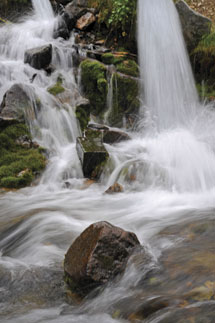 |
 |
||
|
|
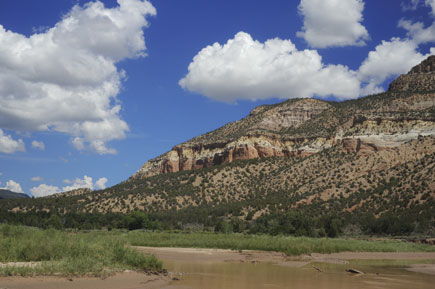 |
The question is—will images made recently using APS-C sensors in our D-SLRs give us the same vivid impression of quality difference when compared to full-frame sensor results, all else being equal? (Of course, in digital “all else being equal” is near impossible to achieve. Not that there aren’t standards one can measure against, but the variables are probably more than you or I want to include in the comparisons.) My answer to the above is that it is unlikely, although when you are really critical about it the full-frame images are better at low-light imaging, especially when you raise ISO. Does this mean there is a line in the sand between APS-C and full-frame sensor D-SLRs? As prices on the full-frame models come down this will become a debate that until recently has been forestalled due to budgetary considerations.
 |
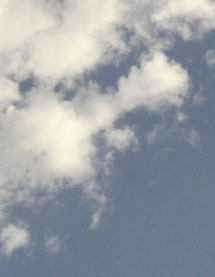 |
|
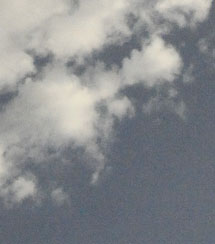 |
||
|
||
D700 Handling And Layout
At first glance the D700 will be very familiar to anyone who has worked with a Nikon D-SLR in this class. However, Nikon supplied a 444-page instruction book with the camera (subtract a number of pages for strap attachment instructions, cautionary notes about using the charger during a thunderstorm, etc.) hinting at much more beneath the hood of this cool-looking, efficiently laid out, and solidly built camera. The feel and handling are of a pro model.
The D700 takes CF (CompactFlash) cards, another argument against the predicted demise of this format in favor of the diminutive SD(HC) cards used by an increasing number of amateur-level cameras. There is only a single slot, not the double slot found in some “pro” models. Images can be formatted in various JPEG levels and compression ratios, TIFF (!), and raw (NEF) or raw + JPEG recording. Base ISO remains at 200, although oddly you can get to ISO 100 with a -1 EV setting. I must say that the return of TIFF is surprising and I am somewhat dumbfounded by it. I’d also like to put in my two cents for allowing custom input of resolution numbers that would automatically retain the aspect ratio.
 |
|
|
The three NEF options are “lossless compressed” (the default), compressed, and uncompressed. Lossless compressed, Nikon claims, has no effect on image quality vs. uncompressed, but writes a bit faster and takes up between 20-40 percent less space on the memory card depending on file info. I saw no differences between the two when I opened them on the monitor later. Compressed saves you 50 percent of the space on a card, but why you would shoot a compressed NEF file escapes me, much like my reaction to the “small” raw Canon now offers. I open the pages of this magazine to the manufacturers for the justification for this compressed raw format. The D700 also allows you to shoot 12- or 14-bit NEF, and I say go for the gold with 14 bit.
File sizes in FX and DX format correspond to the image area—about 36MB in FX and about 24MB in DX. The FX format is more than enough for full-frame 18” prints and will allow you to go considerably higher given the proper use of a resampling step. The DX format can get you a nice 13x19” print, but that’s about the limit, although image quality on both is superb.
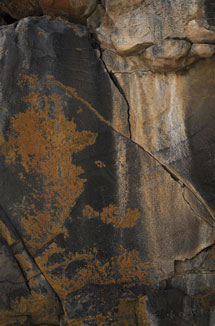 |
|
|
One of the strong suits of this and many other Nikon models is compatibility with past lenses, but here, happily, Nikon has taken it even beyond previous setups. There is even compensation for those who might have gone out and bought Nikon DX lenses, thinking Nikon would not venture into full-frame territory. The Auto DX crop function reduces the recording area by little more than half to 5.1 megapixels, or just enough to cover the image circle cast by the smaller lenses. The actual size of the crop goes from the full (approx.) 24x36mm down to 16x24mm, with the angle of view change reflected in the viewfinder and a subsequent lowering of resolution. But I was heartened to learn that I could use my old AI and even non-AI lenses in both Manual and Aperture-Priority Exposure modes.
Frankly, I’m thrilled that I can now use my “old” AI lenses on this camera with the benefit of autoexposure. For those of you who haven’t panicked and sold all those older lenses on eBay for giveaway prices your payoff day has arrived. Now’s the time, by the way, to start looking for bargains in this area while you can. Unlike other makers, Nikon has stuck to their compatibility guns, and I salute them for it. Yes, there is debate over whether these lenses will deliver the quality needed for digital capture, but from what I have been seeing it’s half processing and half optics that tell the tale these days. To mount and use these lenses to best advantage, by the way, the “non-CPU lens data” menu should be used, not a big thing.
 |
|
|

